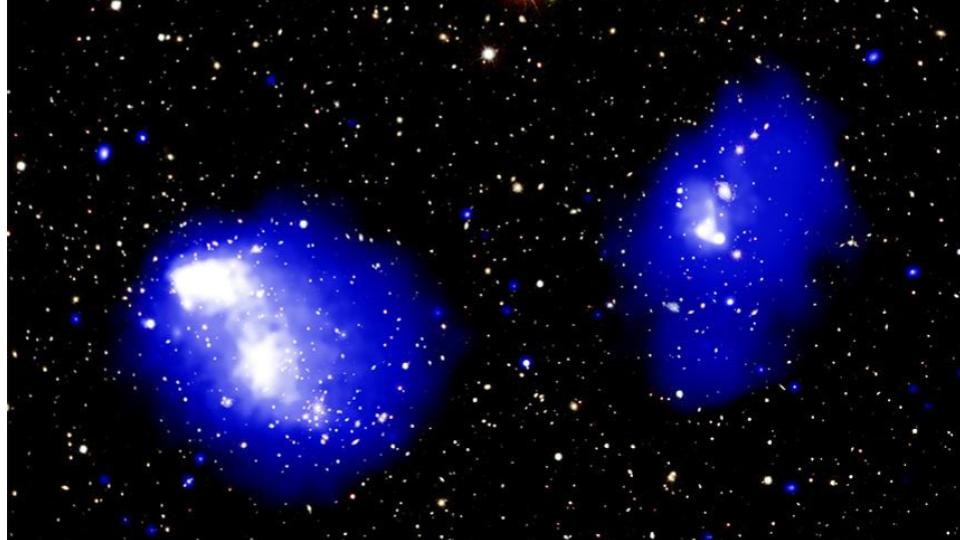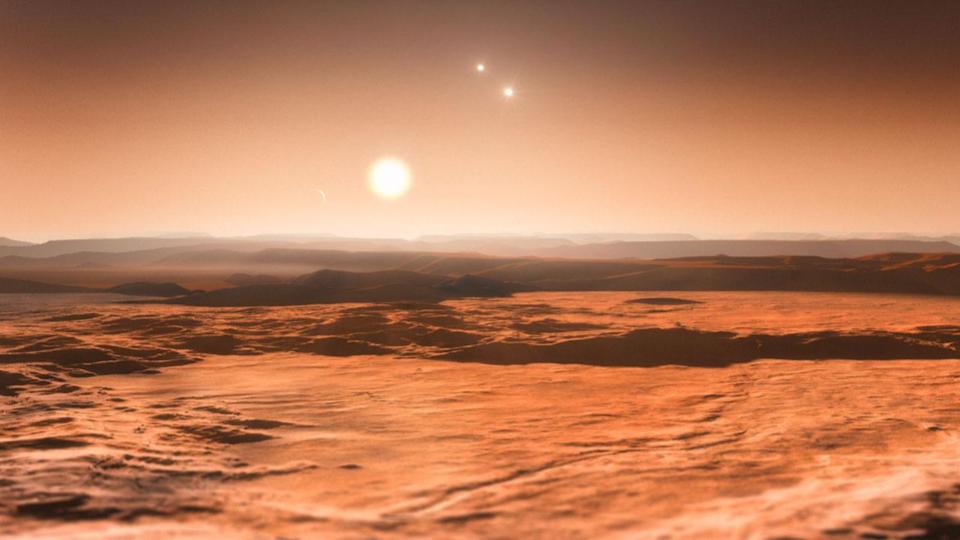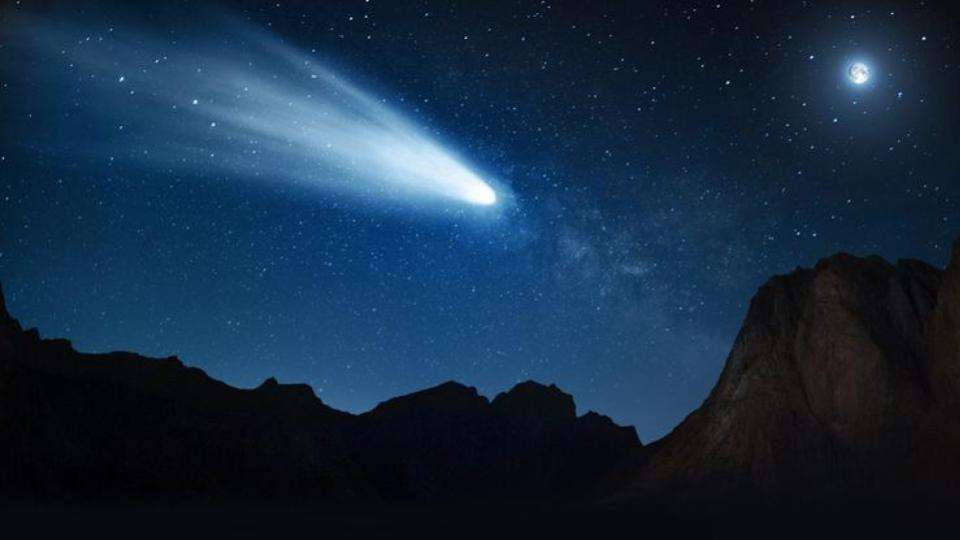Today’s news is all over the place, and by place, we mean universe. We start with the story of 4 galaxy clusters merging, pair wise, into one massive system, and move on to explore a planet in a three-star system made of red dwarfs, and with a model for creating Jupiter family comets.
Susie will be back on Monday, and will update all the things I (Pamela) am out of time to do. Thank you so much for your patience.

- Chandra Spots a Mega-Cluster of Galaxies in the Making (Press Release)
Today’s first story reminds us how important it is to study the sky in multiple colors of light. The galaxy cluster Abell 1758 was initially identified in 1958 using basic images of the sky. In his galaxy cluster catalog, George Abell, listed it as a single object made of vast numbers of galaxies. In the intervening years, this system has been studied with progressively better and more diverse telescopes. In new images acquired with the Chandra X-Ray observatory, it becomes clear that this isn’t just one system. This isn’t just two systems. Rather, this is two pairs of systems, each in a different stage of merging.
Located 3 billion light years away, these sets of systems have already passed one another once, and are in the process of moving past each other. Gravitationally, they will be pulled back together as the over billions of years settle into a single system. Throughout this process, the gas in the systems will get pull out into tails and the chemical in each system will get mixed. These kinds of mergers can trigger star formation and strip remaining gas and dust out of the systems, ending future star formation.
X-Ray data like this allows us to see the hot gas in each system, and in combination with other data, can help astronomers understand how past generations of star formation have been able to enrich each of the 4 systems, and to get a sense of how things will evolve over time. Because this merger will take billions of years to come to completion, all we can really study is how things appear at this one point in time. Luckily, as we look across the sky, we can find a variety of systems in a variety of stages of evolution, and use this combination views to understand galaxy cluster evolution.

From a system of 4 merging galaxy clusters, we now move to a system of 3 stars. A rocky world, 1.38 times the size of the earth, has been found orbiting one of three red dwarf stars in the system LTT1445. Located just 22.5 light years, this new world has been observed to transit in front of its star. For the next few months, astronomer Jennifer Winters, led author of the discovery paper in the Astronomical Journal, will potentially be doing the thing we’ve all been waiting for someone to do: She’s going to maybe measure the atmosphere of a rocky world. She and her collaboration are going to be using data from Hubble, Spitzer, and the Giant Magellan Telescope to look for all signs of an atmosphere while also working to measure the planets mass. While we know its size, without knowing its mass, we can’t know if it is rocky or gassy. But – this could be a rocky planet with an atmosphere, and if it is, we’re going to soon see its atmosphere, and that is pretty cool.

- Beyond Jupiter, Researchers Discovered a ‘Cradle of Comets’ (Press Release)
In our final story of the day, we have news on new models for the crazy life of Kuiper Belt objects that become comets. There is a belt of material from just inside the orbit of Neptune, at under 30Au and out to a distance of 50 AU. This is the Kuiper Belt of Icy objects, and it is one of the homes of material destined to become comets. Through processes that have now been modeled in University of Arizona computer simulations, these objects can have their orbits disturbed through a variety of interactions that send them through the ice and gas giants, and into the band of Centaurs just inside Jupiter’s orbit. From there, further disturbances can send these objects into the inner solar system where we observe them as Jupiter-family comets. Wheat is particularly remarkable about this research is that it predicts that at any given moment only about 1000 objects are in the band of centaurs, and these objects get converted into comets within about 1000 years. We have already discovered about 500 objects within this region, and these numbers are consistent with how likely we think we are to find small things at that distance.
By looking at the range of sizes of objects we see in the Centaur belt, we can get a sense of how often we should get large and spectacular comets. The answer is, not often – maybe every 50,000 years or so. Currently, one large object is circling out in the centaur band, Comet 29P/Schwassmann-Wachmann, and it is possible that in the next 1000 years, our descendants will see it as the most amazing comet ever recorded.
———————
That rounds out our show for today.
Thank you all for listening. The Daily Space is produced by Susie Murph, and is a product of the Planetary Science Institute, a 501(c)3 non profit dedicated to exploring our Solar System and beyond. We are made possible through the generous contributions of people like you. If you would like to learn more, please check us out on patreon.com/cosmoquestx
Each live episode of the Daily Space is archived on YouTube. If you miss an episode here on Twitch.tv, you can find it later on youtube.com/c/cosmoquest. These episodes are edited and produced by Susie Murph.
We are here thanks to the generous contributions of people like you who allow us to pay our staff a living wage. Every bit, every sub, and every dollar committed on Patreon.com/cosmoquestx really helps. If you can’t give financially, we really do understand, and there are other ways you can help our programs. Right now, the best way you can help is to get the word out. Let you friends know, share our channel to your social media, or leave a recommendation. You never know what doors you are opening.
We really wouldn’t be here without you – thank you for all that you do.


 We record most shows live, on Twitch. Follow us today to get alerts when we go live.
We record most shows live, on Twitch. Follow us today to get alerts when we go live.